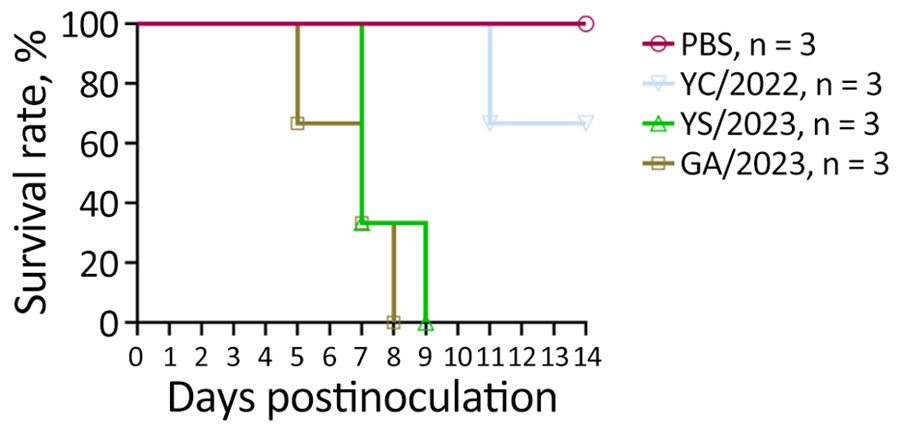Volume 30, Number 10—October 2024
Research
Pathogenicity of Highly Pathogenic Avian Influenza A(H5N1) Viruses Isolated from Cats in Mice and Ferrets, South Korea, 2023
Figure 3

Figure 3. Survival of ferrets infected with highly pathogenic avian influenza A(H5N1) viruses isolated from cats in South Korea, 2023. Viruses were isolated from 1 duck (YC/2022) and 2 cats (YS/2023 and GA/2023). Ferrets (n = 3/group) were intranasally inoculated with 1 mL of 103 50% median lethal dose of each H5N1 virus; PBS was used as a negative control inoculant. Ferrets were monitored for 14 days, and survival rates were compared. GA/2023, A/feline/Korea/M305-7/2023; PBS, phosphate-buffered saline; YC/2022, A/duck/Korea/H493/2022; YS/2023, A/feline/Korea/M302-6/2023.
1These authors contributed equally to this article.
Page created: August 21, 2024
Page updated: September 23, 2024
Page reviewed: September 23, 2024
The conclusions, findings, and opinions expressed by authors contributing to this journal do not necessarily reflect the official position of the U.S. Department of Health and Human Services, the Public Health Service, the Centers for Disease Control and Prevention, or the authors' affiliated institutions. Use of trade names is for identification only and does not imply endorsement by any of the groups named above.